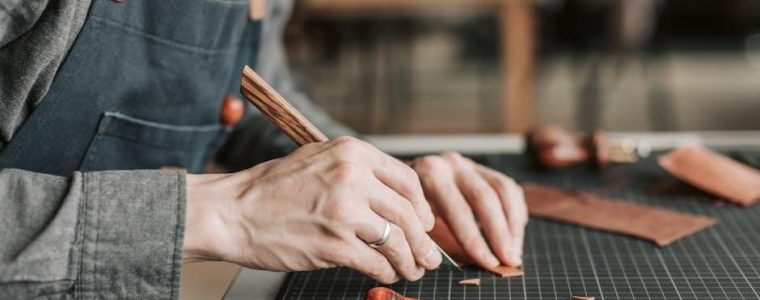
leatherworking guide sod
Leatherworking in SoD is the art of crafting durable leather items, essential for armor, accessories, and tools. It combines creativity with practical skills for in-game success.
What is Leatherworking?
Leatherworking is the craft of transforming raw animal hides into durable, versatile products. It involves tanning, cutting, and shaping leather to create items like armor, accessories, and tools. In SoD, leatherworking is essential for crafting gear for rogues and other classes, utilizing materials such as turtle shells for lightweight armor. This skill combines practicality with creativity, allowing crafters to produce both functional and decorative goods, making it a valuable trade for adventurers and artisans alike.
Importance of Leatherworking in SoD
Leatherworking is vital in SoD for crafting essential gear and accessories, particularly for rogues and other classes. It provides durable leather armor, tools, and functional items, enhancing character performance. This craft also supports the in-game economy, allowing players to earn gold by selling goods. Mastery of leatherworking fosters self-sufficiency and sets crafters apart in the community, making it a cornerstone skill for both adventurers and artisans seeking success in the game.
Basic Tools and Materials Needed
Leatherworking in SoD requires essential tools like cutting knives, stitching needles, and mallets. Key materials include high-quality leather hides, wax, dyes, and strong threads. Players also need tanning agents and conditioning oils to treat the leather properly. Additionally, crafting benches and patterns are crucial for creating specific items, ensuring durability and aesthetic appeal in the finished products. These basics form the foundation for successful crafting in the game.

Getting Started with Leatherworking
To begin leatherworking in SoD, gather essential tools like cutting knives and stitching needles. Set up your workspace at a crafting bench to start projects. Learn about leather types and acquire patterns for crafting. Practice regularly to improve your skill level and experiment with combining leatherworking with Enchanting or Alchemy for enhanced items. Manage time efficiently and be prepared to correct mistakes as you progress in this rewarding skill.
Setting Up Your Workspace
Organize your workspace efficiently by arranging tools like knives, needles, and cutting mats within easy reach. Ensure proper lighting to see details clearly. Use a sturdy, durable work surface to prevent damage. Keep frequently used materials, such as leather strips and threads, readily accessible. Maintain a clean area to avoid clutter and ensure safety while working with sharp objects. A well-organized workspace enhances productivity and reduces errors in leatherworking projects.
Understanding Leather Grades and Types
Leather grades and types vary based on quality, thickness, and tanning methods. Full-grain leather is durable and natural, while top-grain is sanded for a smoother look. Bonded leather, made from scraps, is more affordable but less durable. Exotic leathers, like turtle shell or dragonhide, offer unique properties. Understanding these differences helps crafters choose the right material for their projects, ensuring strength, flexibility, and aesthetic appeal in SoD leatherworking.
Essential Tools for Beginners
A sturdy cutting mat and sharp knife are crucial for precise cuts. A mallet helps shape leather without damaging it, while edge bevelers create smooth edges. A ruler and pencil are vital for accurate measurements and markings. Beginners should also invest in leather conditioners to maintain material quality. These tools form the foundation for successful leatherworking projects, ensuring durability and a professional finish.
Advanced Leatherworking Techniques
Advanced techniques involve mastering tanning methods, intricate stitching patterns, and working with exotic materials. These skills enable crafters to create sophisticated designs with precision and flair, elevating their craftsmanship.
Mastering the Art of Tanning
Tanning is a critical step in leatherworking, transforming raw hides into durable, usable leather. Various tanning methods exist, including vegetable, mineral, and oil-based processes. Each method yields distinct results, such as natural colors or water resistance. Proper tanning requires precise control over time and materials to achieve the desired texture and strength. This skill is essential for creating high-quality leather goods in SoD.
Working with Exotic Leathers
Exotic leathers, such as those from rare animals or infused with elemental properties, offer unique textures and enhanced durability. These leathers are highly sought after for crafting premium armor and accessories. Working with them requires specialized skills, as their natural properties can be challenging to handle. Proper techniques ensure the leather retains its distinctive qualities, making it ideal for both functional and aesthetic applications in SoD.
Advanced Stitching and Embossing
Advanced stitching techniques involve intricate patterns and reinforced seams for durability, while embossing adds decorative elements. These methods elevate leather goods, making them both functional and visually appealing. Mastery requires precision and practice, ensuring each stitch and design enhances the item’s quality and aesthetic value in SoD.
Applications of Leatherworking in SoD
Leatherworking in SoD is vital for crafting armor, accessories, and custom goods. It offers players versatile tools and gear, enhancing both functionality and character customization in the game.
Crafting Leather Armor
Crafting leather armor in SoD involves transforming raw hides into protective gear. It requires tanning, cutting, and stitching to create durable pieces. Use high-quality tools like leather cutters and stitchers for precision. Selecting the right leather type ensures optimal protection and mobility. This process is especially valuable for classes like rogues, who rely on agility and stealth. Crafting your own armor offers customization, cost-effectiveness, and a sense of accomplishment in the game.
Creating Functional Accessories
Leatherworking in SoD allows crafting functional accessories like belts, gloves, and bags. These items enhance gameplay by providing storage solutions or stat boosts. Use sturdy leathers and precise tools to ensure durability. Accessories can be enchanted for extra benefits, making them invaluable for adventurers. Crafting these items not only supports your character but also offers customization options, ensuring practicality and personal style in the game world.
Custom Leather Goods
Custom leather goods in SoD offer unique, personalized items tailored to specific needs. From stylish satchels to intricate belts, these goods combine functionality with aesthetics. Rare materials like exotic leathers can elevate designs, making each piece distinctive. Players can craft goods for personal use or trade, adding value through enchantments or alchemy. This creativity allows for truly one-of-a-kind items, showcasing skill and craftsmanship in the game world.

Leatherworking Economy in SoD
The leatherworking economy in SoD revolves around crafting and trading leather goods, influenced by in-game demand and material availability. Understanding market dynamics is crucial for success.
Understanding Market Demand
Market demand in SoD leatherworking is driven by the need for high-quality armor, accessories, and tools. Players often seek durable gear for their characters, creating consistent demand. The rarity of materials and competition among crafters influence prices. Seasonal updates and expansion content can shift demand, making it crucial to stay informed about popular items and trends. Adapting to these changes ensures profitability and relevance in the market.
Pricing Your Leather Goods
Pricing leather goods in SoD requires balancing material costs, time, and market value. Research similar items to set competitive prices. Rare materials or complex designs justify higher prices. Consider demand fluctuations and adjust accordingly. Crafting time and effort should also be factored in to ensure profitability without deterring buyers.
Gold-Making Strategies
To maximize gold in SoD, focus on crafting in-demand leather items like armor and accessories. Utilize rare materials for high-value goods. Monitor market trends to identify gaps and capitalize on them. Crafting in bulk during low-supply periods can yield higher profits. Additionally, consider offering custom orders to cater to specific player needs, ensuring a steady income stream.
Troubleshooting Common Issues
Troubleshooting in leatherworking involves fixing mistakes, addressing material defects, and managing time efficiently. These strategies help ensure project success and reduce waste effectively.
Fixing Mistakes in Leather Projects
- Identify errors early to prevent costly repairs.
- Use natural tannins or dyes to correct color mismatches.
- Reinforce weak stitching with stronger threads or rivets.
- Address material defects by reinforcing damaged areas.
- Utilize proper tools to avoid scratches or cuts during corrections.
Dealing with Material Defects
Material defects like scars, uneven textures, or natural imperfections can affect leather quality. Inspect hides thoroughly before starting projects to identify such issues. For minor flaws, use tannins or dyes to blend imperfections. Reinforce weak areas with sturdy stitching or patches. For severe defects, consider repurposing the leather for smaller items. Proper conditioning can also restore flexibility and appearance, ensuring durability in finished goods.
Time Management Tips
Effective time management is crucial for leatherworking success. Plan projects in advance, prioritizing tasks to meet deadlines. Break complex designs into simpler steps to maintain workflow. Minimize distractions by dedicating specific hours to crafting. Regularly clean and organize your workspace to reduce wasted time. Batch similar tasks, like cutting or stitching, to optimize efficiency. Track progress to stay motivated and adjust schedules as needed for consistent productivity.

Expert Tips and Tricks
Expert leatherworkers suggest optimizing crafting processes, effectively using rare materials, and incorporating enchanting and alchemy for superior results.
Optimizing Your Crafting Process
Optimize your leatherworking by being prepared with materials and tools. Use pattern books and crafting lists to reduce waste and save time. Plan projects meticulously to minimize defects and enhance efficiency. Incorporate enchanting and alchemy for superior results, as mentioned in expert tips. Regularly maintain tools for better performance. This approach ensures high-quality outcomes and reduces costs, making your crafting process both effective and enjoyable.
Using Rare Materials Effectively
Using rare materials in leatherworking enhances craftsmanship and quality; Source exotic leathers like turtle shell or elemental hides carefully, as they offer unique properties. Store them properly to maintain integrity. When crafting, minimize waste by precise cutting and utilize scraps for smaller projects. Incorporate rare dyes or finishes to elevate your work. These materials can create exceptional items, making your leather goods stand out in both functionality and aesthetics.
Incorporating Enchanting and Alchemy
Incorporating enchanting and alchemy into leatherworking enhances functionality and value. Alchemy provides potions to treat leathers, improving durability or water resistance. Enchanting adds magical properties, such as fire resistance or strength boosts. These synergies allow crafters to create unique, high-demand items. Experiment with combinations to optimize results, ensuring your goods stand out in quality and desirability, both for personal use and market appeal.
Success Stories and Case Studies
Discover inspiring tales of crafters who mastered leatherworking, creating exceptional gear and thriving in SoD’s economy. Their journeys highlight creativity, innovation, and prosperity through skill mastery.
Interviews with Seasoned Crafters
Seasoned crafters share their journeys, from mastering tanning techniques to working with exotic leathers. They reveal how combining alchemy or enchanting enhances their creations. One crafter noted, “Creativity and resourcefulness are key to standing out in SoD’s competitive market.” These insights provide valuable lessons for aspiring leatherworkers, emphasizing innovation and adaptability in the ever-evolving world of leatherworking.
Real-World Applications of Leatherworking
Leatherworking skills extend beyond virtual worlds, offering practical applications in crafting durable goods. From custom armor to functional accessories, crafters utilize tools like Tandy Leather Company’s supplies to create items for everyday use. This art form bridges creativity and utility, inspiring crafters to explore its potential in real-world applications, fostering innovation and sustainability in various industries.
Community Spotlights
The leatherworking community shines through shared projects and collaborations, inspiring crafters to push creative boundaries. From seasoned artisans to newcomers, the collective passion fosters innovation and camaraderie. Spotlighting exceptional work showcases the craft’s versatility, encouraging others to explore its potential. This shared enthusiasm highlights the enduring appeal of leatherworking, making it a cornerstone of both in-game and real-world craftsmanship.

Future of Leatherworking in SoD
The craft continues to evolve with new updates, materials, and techniques, promising exciting opportunities for crafters to innovate and thrive in the world of SoD.
Upcoming Updates and Expansions
SoD’s future updates promise exciting additions for leatherworking, including new materials, advanced crafting techniques, and expanded customization options. These changes aim to enhance both creativity and functionality, offering players more versatility in crafting high-quality leather goods. The introduction of exotic leathers and innovative stitching methods will likely set new standards for in-game craftsmanship, making leatherworking even more rewarding and dynamic for enthusiasts.
New Materials and Techniques
Exploration of elemental leatherworking introduces rare materials like enchanted hides and infused leathers, offering unique properties. Advanced techniques such as chromatic dyeing and intricate embossing are emerging, allowing for breathtaking designs. These innovations enable crafters to create items with enhanced durability and aesthetic appeal, pushing the boundaries of traditional leatherworking and opening new possibilities for both functional and decorative pieces in SoD.
Community Predictions
The community anticipates upcoming updates will introduce exotic materials and innovative crafting methods. Players expect increased demand for high-quality leather goods, driving market growth. Predictions also suggest new dyes and patterns will become popular, while advanced techniques like elemental leatherworking will redefine crafting standards, fostering creativity and competition among artisans in SoD.
Mastering leatherworking in SoD offers a rewarding journey of creativity and practicality. Continuous learning and experimentation will unlock new possibilities, ensuring growth as a skilled crafter.
Final Thoughts on Leatherworking
Leatherworking in SoD is a blend of creativity and practicality, offering crafters the ability to create essential items for both functionality and aesthetics. It requires patience, skill, and a willingness to learn. As you progress, experimenting with new techniques and materials will enhance your craft. Staying updated on market trends and community insights ensures long-term success. Embrace the journey, and leatherworking will become a rewarding and fulfilling skill in your toolkit.
Encouragement for Aspiring Crafters
Embarking on the journey of leatherworking in SoD can be incredibly rewarding. Start with simple projects and gradually experiment with more complex designs. Don’t be discouraged by initial mistakes—each one is a learning opportunity. Join community forums and guilds to connect with experienced crafters who can offer valuable tips and support. With dedication and practice, you’ll master the craft and create items that stand out in the game.
Continuous Learning and Growth
Continuous learning is key to mastering leatherworking in SoD. Stay updated with new techniques, materials, and market trends to refine your skills. Experiment with different leather types and crafting methods to expand your expertise. Engage with the community to share knowledge and gain insights. Regular practice and adaptation will ensure steady improvement and keep your craftsmanship competitive in the ever-evolving world of SoD.